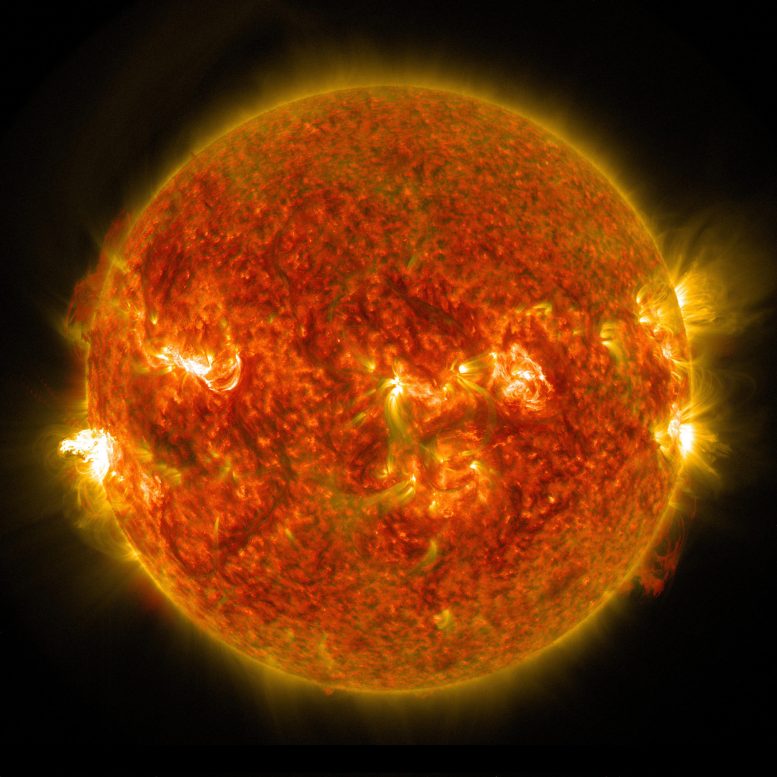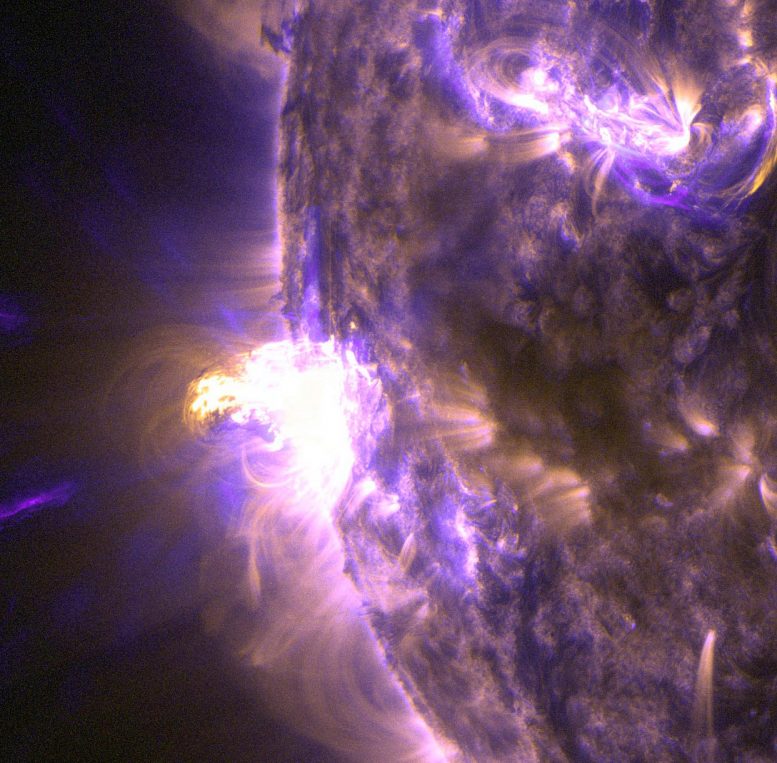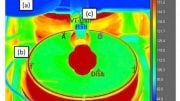
A bright solar flare can be seen on the left side of the sun in this image captured by NASA’s Solar Dynamics Observatory on August 24, 2014. Credit: NASA/SDO
New images from NASA’s Solar Dynamics Observatory show the M5 solar flare that erupted on August 24, 2014.
On August 24, 2014, the sun emitted a mid-level solar flare, peaking at 8:16 a.m. EDT. NASA’s Solar Dynamics Observatory captured images of the flare, which erupted on the left side of the sun. Solar flares are powerful bursts of radiation. Harmful radiation from a flare cannot pass through Earth’s atmosphere to physically affect humans on the ground, however – when intense enough – they can disturb the atmosphere in the layer where GPS and communications signals travel.
To see how this event may affect Earth, please visit NOAA’s Space Weather Prediction Center at http://spaceweather.gov, the U.S. government’s official source for space weather forecasts, alerts, watches, and warnings.
This flare is classified as an M5 flare. M-class flares are ten times less powerful than the most intense flares, called X-class flares.

This close-up of a moderate flare on August 24, 2014, shows light in the 131 and 171 Angstrom wavelengths. The former wavelength, usually colorized in teal, highlights the extremely hot material of a flare. The latter, usually colorized in gold, highlights magnet loops in the sun’s atmosphere. Credit: NASA/SDO









Be the first to comment on "Solar Dynamics Observatory Captures Images of Recent M5 Solar Flare"